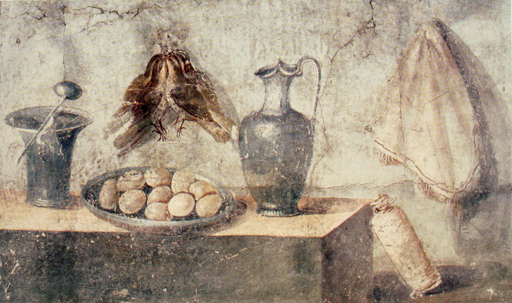Summary
Diet in the ancient world was not only important to health but was also seen as a way of curing diseases. Monitoring and advising on diet was part of the role of the doctor, and digestion was seen as a way of ‘cooking’ the food to make it become part of the body. Vegetarian diets, like raw food diets, were not seen as appropriate for human beings. For babies, breast milk was essential, and its value meant it could even be used as a medicine for adults. Exercise was important to control weight, but excessive exercise was thought to damage the body.
Diet is known about not only from written sources, but also from the images that decorated wealthy people’s houses, and the remains of what they actually ate. Next week you’ll be delving into another type of evidence: what came out of the body, as found in the sewers of the ancient world.

